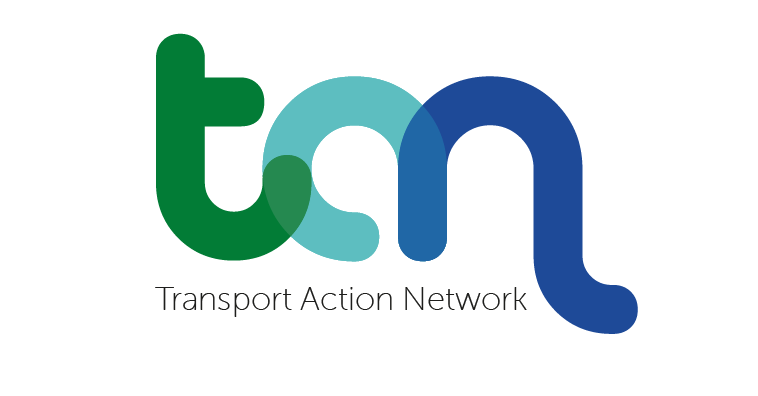Besides ensuring good provision for non-car alternatives (walking, wheeling and cycling, public, shared and community transport), there are two other main mechanisms for managing travel demand. The first is reducing the need to travel, e.g. through planning policies and/or investing in digital connectivity, while the second is to reduce demand for private motorised travel, through some form of pricing mechanism.
The need to travel (especially by car, van or lorry) can be reduced through planning policies which aim to create ‘close knit communities’, where:
- Schools, shops, doctors, dentists etc are close to where people live;
- There are safe and easy ways to reach these and other key destinations by walking, wheeling or cycling and/or by public, shared or community transport; and
- Motor traffic is therefore kept in check, because the alternatives are preferable to driving.
‘Close knit communities’ would:
- Be located close to high-quality public transport, or where this can be easily extended to serve the new development. This helps avoid the need for residents to own cars and for excessive car-parking provision (see below).
- Have road and path networks which are designed to enable safe walking, wheeling and cycling by all – including children and people with disabilities – with key destinations being easily and safely accessible by these modes. Roads and streets should either have a design speed of no more than 20mph or should include high-quality protected cycle provision.
- Be built to high but ‘gentle’ densities, e.g. at least 40-60 dwellings per hectare. Building 4 to 6 storey dwellings allows high-quality homes to be built on less land, with shared garden spaces, while also generating the density of demand for public transport services needed to ensure they are well used, and thus remain financially viable.
- Minimise the space given over to car-parking. This in turn frees up space for walking and cycling and for an attractive public realm, including green open space, benches and places where children can play.
- Incorporate ample quantities of secure, well-designed and conveniently-located cycle parking, and provision for shared mobility, including spaces for mobility hubs, car-sharing cars and bike-share schemes.
Local authorities should be empowered to secure developer contributions for any sustainable transport provision that may be needed to achieve these aims. Equally, they should be given a clear mandate to reject development proposals that are likely to become car-dependent.
Yet, despite decades of planning policy supporting these aims, research by the Royal Town Planning Institute suggests that we have made no progress in this direction, while the New Economics Foundation’s analysis suggests that new developments have, if anything, increased car dependence. Reports by Transport for New Homes have documented the persistence of low-density developments in poorly-connected locations, with lots of road and car parking space but little or no provision for walking, cycling, public or shared transport, or green open space.
The Government needs to be much clearer that its proposed ‘vision-led approach’ to transport and planning aims to bring about a future with a lot less motor traffic – in line with what is needed for surface transport to contribute its share of the UK’s carbon reduction targets. Proposed development sites or actual developments should be subject to a ‘traffic net reduction’ test to assess whether they are in line with this vision. DfT’s Connectivity Tool can be used to assess whether or not proposed development sites are well connected by walking, cycling and public transport to key destinations. It could form part of this test (though regrettably the tool itself is so far only available to local authorities).
A study by property firm Knight Frank has shown that a lot of housing could be provided on land currently occupied by under-used publicly-owned car parks.
Further information:
Official guidance: The main source of national planning policies which local authorities must have regard to is the National Planning Policy Framework (see particularly the transport chapter). There is also useful advice in the National Model Design Code.
Unofficial guidance: See Vision Led Planning, by Transport for Quality of Life and others, and Stepping off the Road to Nowhere, by Create Streets and Sustrans.
A combination of technological advance and the experience of covid has increased our reliance on digital connectivity and our ability to fulfil many aspects of our lives without needing to travel. However the benefits of digital connectivity are not evenly distributed, with some of the most car-dependent locations also being those with the poorest digital connectivity. Improving digital connectivity, particularly in more remote rural areas, may help reduce the need for some longer-distance car, van and rail journeys. See discussion of the impacts of digital accessibility.
Local authorities seeking to reduce pollution from internal combustion engine (ICE) vehicles – e.g. through Clean Air Zones and similar schemes – should also incentivise vehicle owners to scrap older or dirtier vehicles and replace them with cleaner alternatives. However, rather than simply offering cash to buy new vehicles, these schemes should offer ‘mobility credits’, which can instead be used for public or shared transport (e.g. for season tickets or subscriptions to car-share or bike-share scheme) and/or to purchase pedal cycles (including electrically-assisted cargo-bikes or other non-standard machines), as has been done by the French Government and by Transport for the West Midlands.
There is a complementary ‘chicken-and-egg’ relationship between improving public, shared and community transport and active travel, while deterring the use of private cars through some form of pricing. Pricing can relate to the use of road-space (either in general or at particularly busy times and places), or parking space (including the options of workplace parking levies and/or higher charges for the largest, heaviest or least fuel-efficient vehicles), or motor vehicle ownership, or fuel consumption.
These types of pricing mechanisms can provide much of the funding needed to improve public transport and active travel. However they are also needed to deter unnecessary driving, so as to make space available for those walking, cycling and public transport improvements.
Using the funding from these pricing schemes to improve the alternatives is vital if the pricing schemes themselves are to be seen to be fair, with people seeing the money being used to make it easier for them to get around without depending on private cars.
Polling by Ipsos found that public support for pricing for urban road-space went up from 33% in 2007 to 62% in 2020. It is higher among captains of industry, and rises higher still if the revenues are used to improve public transport, to tackle air pollution or greenhouse gas emissions, and if the taxes are higher on more polluting vehicles. Conversely, support falls if the revenues are returned to drivers in the form of reduced road taxes. Research by Campaign for Better Transport found a clear majority supported road pricing more generally (49% in favour compared with 19% against), echoing earlier findings from the Social Marketing Foundation. Both reports reinforce the point that road pricing schemes need to be fair.
Pricing mechanisms can either aim to reduce the greenhouse gas emissions from road transport, or the more localised (predominantly urban) impacts of congestion and pollution, or both. There is a good case for adopting a mix of both approaches, in which:
- National government operates a distance-based pricing scheme, which reflects the climate impacts of road travel, while yielding funding to improve longer-distance travel (notably the rail and inter-urban bus networks);
- Local authorities (particularly in the city regions) operate congestion and pollution-based pricing schemes, yielding funding for local transport improvements (e.g. walking and cycling provision, as well as improving local bus and metro services).
This approach has the benefit of ensuring that national and local government share the political costs of introducing pricing schemes, but also share the revenues and the responsibilities for improving local and national transport respectively. This briefing from Friends of the Earth says more about funding sustainable transport through various ways in which pricing can be used to reduce travel demand.
Further information:
Unofficial guidance: A White Paper on Charging for Road Use, from the Chartered Institution for Highways & Transportation, summarises the latest research, technological practicalities and empirical evidence on implementing road user charging schemes around the world. UK100 provides a toolkit for implementing workplace parking levies.

"Pricing mechanisms are also needed to deter unnecessary driving, so as to make space available for those walking, cycling and public transport improvements."

"Pricing mechanisms are also needed to deter unnecessary driving, so as to make space available for those walking, cycling and public transport improvements."
Besides ensuring good provision for non-car alternatives (walking, wheeling and cycling, public, shared and community transport), there are two other main mechanisms for managing travel demand. The first is reducing the need to travel, e.g. through planning policies and/or investing in digital connectivity, while the second is to reduce demand for private motorised travel, through some form of pricing mechanism.
The need to travel (especially by car, van or lorry) can be reduced through planning policies which aim to create ‘close knit communities’, where:
- Schools, shops, doctors, dentists etc are close to where people live;
- There are safe and easy ways to reach these and other key destinations by walking, wheeling or cycling and/or by public, shared or community transport; and
- Motor traffic is therefore kept in check, because the alternatives are preferable to driving.
‘Close knit communities’ would:
- Be located close to high-quality public transport, or where this can be easily extended to serve the new development. This helps avoid the need for residents to own cars and for excessive car-parking provision (see below).
- Have road and path networks which are designed to enable safe walking, wheeling and cycling by all – including children and people with disabilities – with key destinations being easily and safely accessible by these modes. Roads and streets should either have a design speed of no more than 20mph or should include high-quality protected cycle provision.
- Be built to high but ‘gentle’ densities, e.g. at least 40-60 dwellings per hectare. Building 4 to 6 storey dwellings allows high-quality homes to be built on less land, with shared garden spaces, while also generating the density of demand for public transport services needed to ensure they are well used, and thus remain financially viable.
- Minimise the space given over to car-parking. This in turn frees up space for walking and cycling and for an attractive public realm, including green open space, benches and places where children can play.
- Incorporate ample quantities of secure, well-designed and conveniently-located cycle parking, and provision for shared mobility, including spaces for mobility hubs, car-sharing cars and bike-share schemes.
Local authorities should be empowered to secure developer contributions for any sustainable transport provision that may be needed to achieve these aims. Equally, they should be given a clear mandate to reject development proposals that are likely to become car-dependent.
Yet, despite decades of planning policy supporting these aims, research by the Royal Town Planning Institute suggests that we have made no progress in this direction, while the New Economics Foundation’s analysis suggests that new developments have, if anything, increased car dependence. Reports by Transport for New Homes have documented the persistence of low-density developments in poorly-connected locations, with lots of road and car parking space but little or no provision for walking, cycling, public or shared transport, or green open space.
The Government needs to be much clearer that its proposed ‘vision-led approach’ to transport and planning aims to bring about a future with a lot less motor traffic – in line with what is needed for surface transport to contribute its share of the UK’s carbon reduction targets. Proposed development sites or actual developments should be subject to a ‘traffic net reduction’ test to assess whether they are in line with this vision. DfT’s Connectivity Tool can be used to assess whether or not proposed development sites are well connected by walking, cycling and public transport to key destinations. It could form part of this test (though regrettably the tool itself is so far only available to local authorities).
A study by property firm Knight Frank has shown that a lot of housing could be provided on land currently occupied by under-used publicly-owned car parks.
Further information:
Official guidance: The main source of national planning policies which local authorities must have regard to is the National Planning Policy Framework (see particularly the transport chapter). There is also useful advice in the National Model Design Code.
Unofficial guidance: See Vision Led Planning, by Transport for Quality of Life and others, and Stepping off the Road to Nowhere, by Create Streets and Sustrans.
A combination of technological advance and the experience of covid has increased our reliance on digital connectivity and our ability to fulfil many aspects of our lives without needing to travel. However the benefits of digital connectivity are not evenly distributed, with some of the most car-dependent locations also being those with the poorest digital connectivity. Improving digital connectivity, particularly in more remote rural areas, may help reduce the need for some longer-distance car, van and rail journeys. See discussion of the impacts of digital accessibility.
Local authorities seeking to reduce pollution from internal combustion engine (ICE) vehicles – e.g. through Clean Air Zones and similar schemes – should also incentivise vehicle owners to scrap older or dirtier vehicles and replace them with cleaner alternatives. However, rather than simply offering cash to buy new vehicles, these schemes should offer ‘mobility credits’, which can instead be used for public or shared transport (e.g. for season tickets or subscriptions to car-share or bike-share scheme) and/or to purchase pedal cycles (including electrically-assisted cargo-bikes or other non-standard machines), as has been done by the French Government and by Transport for the West Midlands.
There is a complementary ‘chicken-and-egg’ relationship between improving public, shared and community transport and active travel, while deterring the use of private cars through some form of pricing. Pricing can relate to the use of road-space (either in general or at particularly busy times and places), or parking space (including the options of workplace parking levies and/or higher charges for the largest, heaviest or least fuel-efficient vehicles), or motor vehicle ownership, or fuel consumption.
These types of pricing mechanisms can provide much of the funding needed to improve public transport and active travel. However they are also needed to deter unnecessary driving, so as to make space available for those walking, cycling and public transport improvements.
Using the funding from these pricing schemes to improve the alternatives is vital if the pricing schemes themselves are to be seen to be fair, with people seeing the money being used to make it easier for them to get around without depending on private cars.
Polling by Ipsos found that public support for pricing for urban road-space went up from 33% in 2007 to 62% in 2020. It is higher among captains of industry, and rises higher still if the revenues are used to improve public transport, to tackle air pollution or greenhouse gas emissions, and if the taxes are higher on more polluting vehicles. Conversely, support falls if the revenues are returned to drivers in the form of reduced road taxes. Research by Campaign for Better Transport found a clear majority supported road pricing more generally (49% in favour compared with 19% against), echoing earlier findings from the Social Marketing Foundation. Both reports reinforce the point that road pricing schemes need to be fair.
Pricing mechanisms can either aim to reduce the greenhouse gas emissions from road transport, or the more localised (predominantly urban) impacts of congestion and pollution, or both. There is a good case for adopting a mix of both approaches, in which:
- National government operates a distance-based pricing scheme, which reflects the climate impacts of road travel, while yielding funding to improve longer-distance travel (notably the rail and inter-urban bus networks);
- Local authorities (particularly in the city regions) operate congestion and pollution-based pricing schemes, yielding funding for local transport improvements (e.g. walking and cycling provision, as well as improving local bus and metro services).
This approach has the benefit of ensuring that national and local government share the political costs of introducing pricing schemes, but also share the revenues and the responsibilities for improving local and national transport respectively. This briefing from Friends of the Earth says more about funding sustainable transport through various ways in which pricing can be used to reduce travel demand.
Further information:
Unofficial guidance: A White Paper on Charging for Road Use, from the Chartered Institution for Highways & Transportation, summarises the latest research, technological practicalities and empirical evidence on implementing road user charging schemes around the world. UK100 provides a toolkit for implementing workplace parking levies.





